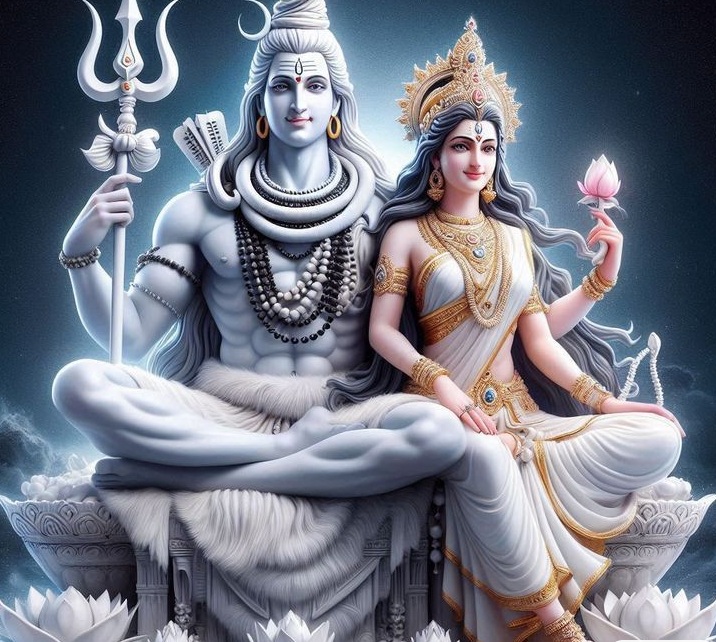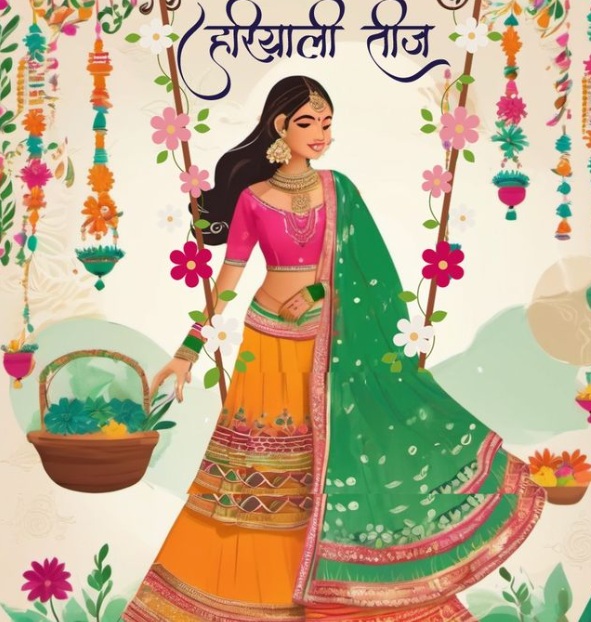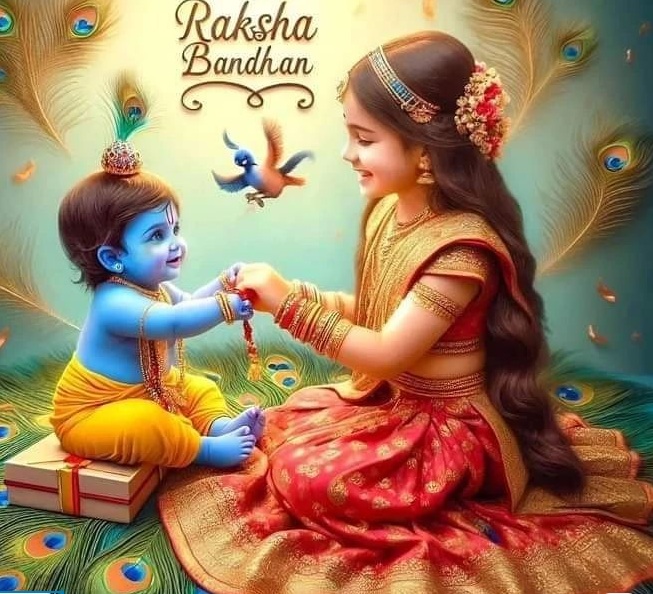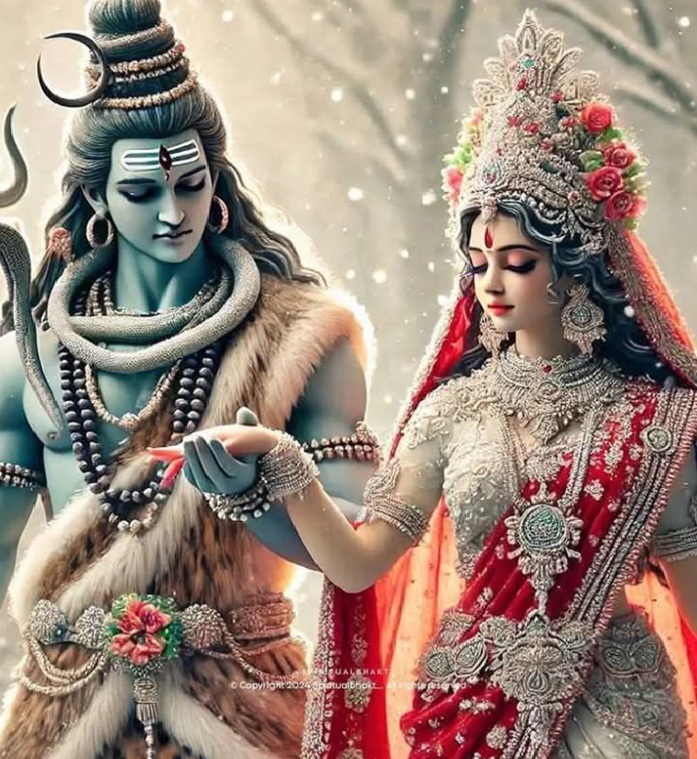Official Website : https://divinenewz.com/
The month of Sawan month—also known as Shravan Maas—is regarded as one of the most sacred months in the Hindu lunar calendar. Falling typically between July and August, Sawan holds deep religious, cultural, and spiritual significance. It is a time when devotion to Lord Shiva reaches its peak, and Hindus across India and other parts of the world immerse themselves in prayers, fasting, rituals, and acts of devotion.
1. INTRODUCTION
The month gets its name from the Nakshatra Shravan, which rules during this period. Throughout this month, the air vibrates with sacred chants like “Om Namah Shivaya”, bhajans, and shlokas, as devotees perform a variety of rituals in honor of Lord Shiva.
Sāwaṇ or Sāuṇ (Shahmukhi: ساؤݨ; Gurmukhi: ਸਾਵਣ, ਸਾਉਣ, Punjabi pronunciation: [saːʋəɳᵊ, saːʊɳᵊ]) is the fifth month in the Punjabi calendar.
Many Indian calendars started in different eras such as Shaka Calendar (national calendar of India) traditional Vikrama as well as the Nanakshahi calendar which governs the activities within Sikhism. This month coincides with the Sanskrit श्रावण Shraavana in the Hindu calendar and the Indian national calendar, with which it shares derivation, and with
July and August in the Gregorian and Julian calendars and is 31 days long, like the Gregorian and Julian calendars.
This month is the most humid month of the year in South Asia.
2. SHRAVAN CIVIL MONTH 2025 : DATES AND CALENDAR
- Shravan Month 2025 began on Wednesday,
July 11, 2025, immediately following
Ashadha Purnima.
- It continues for one lunar month, ending with
Shravan Purnima on August 09, 2025 (depending on regional calendar traditions).
- This places Shravan squarely in the heart of monsoon season across India.
3. WHAT IS SAWAN (SHRAVAN) MONTH?
Sawan, or Shravan Maas, is the fifth month of the Hindu lunar calendar. It is dedicated primarily to Lord Shiva, the destroyer and transformer in the Hindu Trinity (Trimurti). During this month, the Monsoon season blesses the land with rain, symbolizing purification and nourishment.
Astronomical significance
The month is named after the
Shravan Nakshatra, one of the 27 Nakshatras in Vedic astrology. This Nakshatra is considered very auspicious and is associated with listening, learning, and devotion.
Shravan month begins with the
Full Moon (Purnima) of the Ashadha month and ends on the
Purnima of the Shravan month.
- The word Shravan comes from the lunar
Shravana Nakshatra, with its name arising when the full moon aligns with that celestial star.
- It marks the beginning of
Chaturmas, the four-month sacred period of heightened spiritual activity during the monsoon.
- It’s the only month in the Hindu calendar devoted primarily to
Lord Shiva, representing purification, penance, and transformation.
4. WHY IS IT CALLED SAWAN?
The word “Sawan” (also known as Shravan or Shravana Maas) originates from the Sanskrit word “Shravana” (श्रवण), which is the name of a Nakshatra (lunar constellation) in Vedic astrology. The month is called Sawan because during this period, the full moon (Purnima) typically occurs when the Shravana Nakshatra is dominant in the sky.
- Link with Shravana Nakshatra :
- Nakshatras are 27 lunar constellations used in Vedic astrology.
- Shravana is the 22nd Nakshatra, and its presence during the full moon is the reason the month is named
Shravan or Sawan.
- In ancient Vedic calendars, months were named after the Nakshatra visible during the full moon.
- Nakshatras are 27 lunar constellations used in Vedic astrology.
- Sanskrit Meaning of “Shravana” :
- The term
Shravana is derived from the root word
“श्रु (shru)”, meaning “to hear” or “to listen.”
- It is associated with
listening to sacred knowledge or divine teachings, especially the
Vedas and spiritual discourses.
- Thus, the month of
Sawan is also considered an ideal time for
spiritual learning and devotion.
- The term
Shravana is derived from the root word
“श्रु (shru)”, meaning “to hear” or “to listen.”
Other Cultural and Spiritual Associations:
- Association with Lord Shiva :
- Sawan is deeply connected with
Lord Shiva, and many legends
(like the Samudra Manthan, where Shiva drank poison) are associated with this time.
- Therefore, the name Sawan also carries a
spiritual vibration of divine surrender and devotion.
- Sawan is deeply connected with
Lord Shiva, and many legends
(like the Samudra Manthan, where Shiva drank poison) are associated with this time.
- Seasonal Reference :
- Sawan coincides with the
monsoon season in India, bringing life-giving rains.
- The rains symbolize
fertility, growth, and purification, aligning with the
spiritual renewal of the soul during this holy month.
- Sawan coincides with the
monsoon season in India, bringing life-giving rains.
In Short:
- The month is called Sawan because the full moon falls during the Shravana Nakshatra.
- The word
Shravana means “to hear,” and it connects to listening to divine wisdom.
- The name reflects both astrological timing and spiritual symbolism, especially the
devotion to Lord Shiva and inner purification.
- Devotion to Lord Shiva :
The most important reason why Shravan is special is its association with Lord Shiva. It is believed that:
- During this time, Lord Shiva drank the halahala poison during the churning of the ocean (Samudra Manthan) to save the universe.
- Hence, He is worshipped as the Neelkanth, the one with a blue throat.
- During this time, Lord Shiva drank the halahala poison during the churning of the ocean (Samudra Manthan) to save the universe.
- Monday Fasts (Shravan Somvar) :
Every Monday (Somvar) in this month is considered extremely auspicious and is dedicated to Lord Shiva.
- Devotees observe fasts and offer
Belpatra, milk, and water to Shiva Lingam.
- It is believed that observing Shravan Somvar can help in getting health, wealth, peace, and a good life partner.
- Devotees observe fasts and offer
Belpatra, milk, and water to Shiva Lingam.
- Highly Energized Atmosphere :
- Temples are filled with chantings of
Shiva Mantras.
- Devotees wear
rudraksha, offer
Jalabhishek, and walk barefoot in
Kanwar Yatra to fetch holy water from the
Ganga and offer it to Shiva Lingam.
- Temples are filled with chantings of
Shiva Mantras.
- Ruling Planet – Moon :
- Shravan is governed by the
Moon, which
controls emotions and the mind.
- Meditating and fasting during this month enhances
mental strength and emotional stability.
- Shravan is governed by the
Moon, which
controls emotions and the mind.
- Nakshatra Energy :
- Shravan Nakshatra means
“to listen.”
- It is a month where listening to
scriptures, mantras, and discourses brings higher spiritual insight.
- Shravan Nakshatra means
“to listen.”
- Sattvic Energy :
- The vibrations during this time are
Sattvic (pure) in nature.
- Great for starting
spiritual practices, sadhana, and meditation.
- The vibrations during this time are
Sattvic (pure) in nature.
- Samudra Manthan & Neelkanth Legend :
During the churning of the cosmic ocean (Samudra Manthan), the deadly poison (Halahala) emerged. To save creation, Lord Shiva swallowed the poison. His throat turned blue—hence the name Neelkanth. Devotees remember and revere this act throughout Shravan.
- Chaturmas Begins :
Shravan inaugurates a spiritually charged time when sadhus take residence in one locale, rituals increase, and devotees pursue austerities, scriptural study, and extra seva (service).
- Mounting Spiritual Merit :
Scriptures claim that worshiping Shiva during Shravan yields exponentially amplified spiritual benefits—even a humble offering can purify a lifetime of karma.
- Shravan Somvar Vrat (Mondays):
- Devotees fast or observe partial fasts on each
Shravan Monday.
- Rituals include taking a
holy bath, visiting a Shiva temple (or home shrine), offering
water, milk, honey, and Bilva leaves, chanting
Om Namah Shivaya or
Mahamrityunjaya Mantra, and concluding with a simple meal in the evening.
- Devotees fast or observe partial fasts on each
Shravan Monday.
- Pradosh Vrat :
- Observed on the
13th lunar day (Trayodashi) of each fortnight with special worship and prayers.
- Observed on the
13th lunar day (Trayodashi) of each fortnight with special worship and prayers.
- Shravan Shivratri :
- The
monthly Shivratri falling within
Shravan (Krishna Paksha Chaturdashi) brings deeper fasting and prolonged night-long vigil for puja and chanting.
- The
monthly Shivratri falling within
Shravan (Krishna Paksha Chaturdashi) brings deeper fasting and prolonged night-long vigil for puja and chanting.
- Kanwar Yatra :
- Millions of devotees
(Kanwariyas) walk barefoot long distances to fetch Ganga water, carrying it in decorated pots
(kanwars) to pour over Shiva lingas—especially at
Haridwar, Gaumukh, Ujjain, and Deoghar.
- Millions of devotees
(Kanwariyas) walk barefoot long distances to fetch Ganga water, carrying it in decorated pots
(kanwars) to pour over Shiva lingas—especially at
Haridwar, Gaumukh, Ujjain, and Deoghar.
- Daily Worship :
- Abhishekam (ritual bath) of Shiva Linga with Panchamrit, Bilva leaves, sandalwood paste; lamp lighting; listen/recite Shiva Stotras and Puranas.
- Abhishekam (ritual bath) of Shiva Linga with Panchamrit, Bilva leaves, sandalwood paste; lamp lighting; listen/recite Shiva Stotras and Puranas.
- Halahala & Neelkanth:
- A cosmic tale symbolizing sacrifice and salvation, underscoring Shiva’s role as protector of creation.
- A cosmic tale symbolizing sacrifice and salvation, underscoring Shiva’s role as protector of creation.
- Shravankumar :
- The paragon of filial devotion, carrying his blind parents in baskets until a tragic misunderstanding leads to his death. Representing duty (dharma) and consequences, though he’s different from the month’s name.
- The paragon of filial devotion, carrying his blind parents in baskets until a tragic misunderstanding leads to his death. Representing duty (dharma) and consequences, though he’s different from the month’s name.
- Parvati’s Tapa (Penances) :
- Parvati performed rigorous austerities during Shravan to win Shiva’s hand in marriage. This inspires women to undertake vows like
Mangala Gauri Vrat.
- Parvati performed rigorous austerities during Shravan to win Shiva’s hand in marriage. This inspires women to undertake vows like
Mangala Gauri Vrat.
- Legend of Nag Panchami:
-
Serpents and Shiva share deep mythical
bonding—symbolic of kundalini energy and cosmic balance.
-
Serpents and Shiva share deep mythical
bonding—symbolic of kundalini energy and cosmic balance.
- Shravana Nakshatra is ruled by the Moon, connected to
Vishnu—harmonizing male-female divine energies.
- Shravan aligns with the monsoon season, which ancient seers recognized as a spiritually significant and energetically supportive time for rituals involving water and purification.
-
Snakes are more visible during rains, hence their worship aligns with agrarian and ecological rhythms.
- North India: Kanwar Yatra, Shravan Somvar Vrat, Nag Panchami, Shravan Shivratri
- Maharashtra: Mangala Gauri Vrat, Parvati worship, pilgrimage to Bhimashankar
- South India: MAvani Avittam (Upakarma), Varalakshmi Vratam, Parvati rituals
- Eastern India: Huge congregations at Baidyanath and Tarakeswar temples
- Western India: Abhyang Snan and special pujas in Somnath, Trimbakeshwar
- Types of fasting: full liquid fasts, partial fasts (fruits, milk), or “nirjala” (without water).
- Permissible foods: fruits,
milk, nuts, buckwheat, tapioca – ideal for digestive ease during monsoons.
- Health benefits: Digestive rest, toxin elimination, lower infection risk in humid months.
- Sacred texts :
Shiva Purana, Linga Purana, Skanda Purana, Bhagavad Gita.
- Stotras & Mantras :
Rudram, Om Namah Shivaya, Mahamrityunjaya, Shiva Chalisa
- Group discourses and satsangs : in temples and communities provide guidance and collective upliftment.
5. WHY IS SHRAVAN SO SPECIAL?
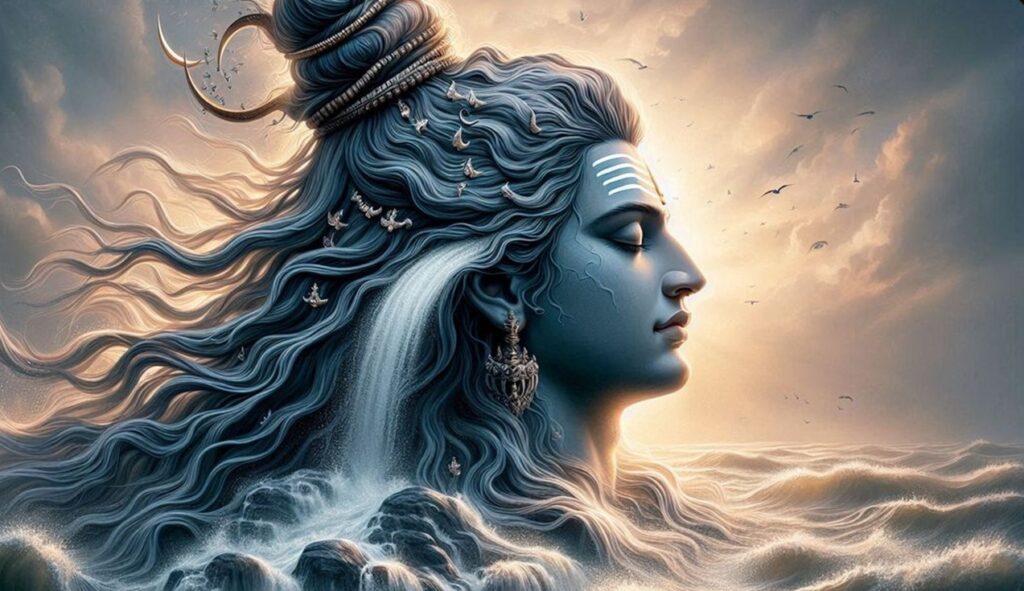
6. ASTROLOGICAL AND SPIRITUAL SIGNIFICANCE OF SAWAN
7. SPIRITUAL SIGNIFICANCE AND SACRED CONNECTION TO LORD SHIVA
8. KEY RITUALS, FASTINGS, AND PRACTICES
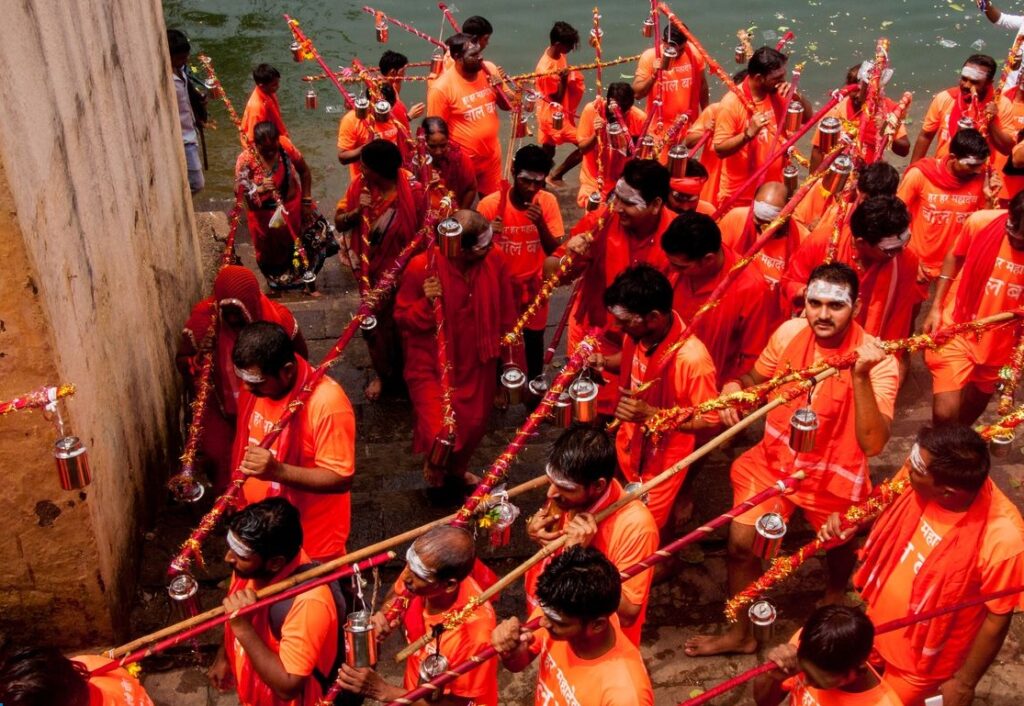
9. PURANIC AND MYTHOLOGICAL TALES OF SHRAVAN
10. ASTROLOGY, NAKSHATRAS, AND NATURAL ORDERING
11. POPULAR SHRAVAN PRACTICES ACROSS INDIA
12. FASTING, HEALTH AND SOCIAL WELL BEING
13. SCRIPTURAL STUDY, SATSANGS AND CHANTING
Shravan encourages devotion and wisdom through focused spiritual practices:
14. PILGRIMAGE SITES & HOLY JOURNEYS
- Mount Kailash (Tibet) : considered
Lord Shiva’s abode.
- Kashi/Kedarnath/Badrinath/Haridwar/Rishikesh : streams of
pilgrims offer Ganga water to Shiva Lingas.
- Trimbakeshwar, Bhimashankar, Somnath, Baidyanath : focal points for major Shravan celebrations.
- Bhakti (Devotion) : intense emotional
connection with Lord Shiva.
- Karma (Action) :
seva (charity), pilgrimage, offerings.
- Jnana & Dharana : meditation, scriptural comprehension, evening vigils.
- Moksha: the spiritual culmination—
many believe Shiva grants final liberation to those devoted during Shravan.
- Community: shared rituals, group pilgrimages, temple festivities.
- Women’s observances : vows like
Mangala Gauri and Varalakshmi celebrate feminine power.
- Ecological awareness : worship of snakes and rain-related rituals align with seasonal cycles.
- Fasting during rains : aligns with Ayurvedic recommendations to improve immunity.
- Barefoot Kanwariyas : connect
body and earth—similar to modern earthing studies.
- Respect for nature: serpent worship signals ancient wildlife reverence, pre-dating environmental science.
- Shravan Somvar Vrat (श्रावण सोमवार व्रत):
This is one of the most important observances of Shravan, where devotees observe fasts on all Mondays (Somvar) to please Lord Shiva.
Legend –
The legend of Samudra Manthan—the churning of the cosmic ocean—is associated with Shravan. It is believed that when Halahal (poison) emerged, Lord Shiva drank it to save the universe. As a result, this month is considered auspicious for worshiping him.Rituals-
- Fasting from sunrise to sunset
- Offering
Bel Patra, milk, curd, ghee, honey, sugar, and water to the Shivling.
- Offering Recitation of
Shiv Chalisa, Maha Mrityunjaya Mantra, and Rudrashtakam.
Regional Variations-
- In North India, devotees
visit Shiva temples and offer
Ganga Jal.
- In Maharashtra,
women pray for a good husband or the well-being of their spouses.
- Fasting from sunrise to sunset
- Hariyali Teej (हरियाली तीज) –
Celebrated on the third day of the Shukla Paksha, Hariyali Teej marks the union of Lord Shiva and Goddess Parvati.
Legend –
Parvati undertook severe penance to win Shiva’s love. Impressed by her devotion, Lord Shiva accepted her as his wife. This festival commemorates that divine union.Rituals-
- Married
women dress in green (symbolizing fertility and monsoon).
- They apply
mehendi (henna), wear bangles, and worship Parvati Ma.
- Fasting for the
long life of the husband.
- Swings are hung from trees, and women sing traditional songs.
Significance-
- Symbol of
marital bliss.
- Celebrated with fervor in Rajasthan, Uttar Pradesh, Madhya Pradesh, and Bihar.
- Married
women dress in green (symbolizing fertility and monsoon).
- Nag Panchami (नाग पंचमी) –
Celebrated on the fifth day (Panchami) of the bright half of Shravan, this festival is dedicated to the worship of serpents or Nagas.
Legend –
One legend suggests that Lord Krishna once subdued the serpent Kaliya on this day. Another version connects it to the Mahabharata, where Bhima conquered the serpent Vasuki.Rituals-
- People worship
images or clay idols of snakes.
- Offerings of
milk, sweets, and flowers at snake burrows or temples.
- Reading or listening to Nag Panchami Katha.
Significance-
- Prayers are offered for protection from snake bites.
- A reminder of the interconnection between humans and nature.
- People worship
images or clay idols of snakes.
- Varalakshmi Vratam (वरलक्ष्मी व्रतम्) –
Observed mostly in South India, Varalakshmi Vratam falls on a Friday before Raksha Bandhan and is dedicated to Goddess Lakshmi.
Legend –
According to Skanda Purana, Goddess Lakshmi appeared before a woman named Charumati in her dream and advised her to perform this vrat for prosperity.Rituals-
- Women
clean their homes and
decorate the Kalash (pot) representing Lakshmi.
- Perform
Lakshmi Puja with sweets, coconut, rice, and gold/silver items.
- Fasting and recitation of Lakshmi Ashtottaram.
Significance-
- Believed to bring
wealth, prosperity, and happiness.
- Widely celebrated in
Tamil Nadu, Andhra Pradesh, Karnataka, and Telangana.
- Women
clean their homes and
decorate the Kalash (pot) representing Lakshmi.
- Raksha Bandhan (रक्षा बंधन) –
Raksha Bandhan falls on the full moon day (Purnima) of Shravan. It celebrates the bond between brothers and sisters.
Legend –
There are several legends:-
Draupadi tied a cloth on Krishna’s bleeding finger, and he vowed to protect her.
- Queen Karnavati of Mewar sent a rakhi to Emperor Humayun seeking protection.
Rituals-
-
Sisters tie a rakhi (sacred thread) on their brothers’ wrists.
- Brothers vow to protect and care for their sisters.
- Exchange of gifts, sweets, and blessings.
Significance-
- Reinforces the sibling bond.
- Also symbolizes
love, trust, and duty.
-
Draupadi tied a cloth on Krishna’s bleeding finger, and he vowed to protect her.
- Shravani Purnima (श्रावणी पूर्णिमा) –
Shravani Purnima marks the end of Shravan and is observed with multiple traditions depending on the region:- Upakarma among Brahmins.
- Nariyal Purnima in coastal regions.
- Avani Avittam in Tamil Nadu and Kerala.
Rituals-
- Brahmins change their sacred thread (Yajnopavita).
- Perform Vedic rituals and homams.
- Fishermen offer coconuts to the sea praying for safety.
Significance-
- Renewal of spiritual commitment.
- Gratitude to water bodies and nature.
- Upakarma among Brahmins.
- Mangala Gauri Vrat (मंगल गौरी व्रत) –
Observed on Tuesdays of Shravan, this vrat is dedicated to Goddess Parvati in her Mangala Gauri form.
Rituals-
-
Married women perform puja and fasting for marital bliss.
- Offerings include
betel leaves, rice, and fruits.
- Listening to Mangala Gauri Vrata Katha.
Significance-
- Especially observed by newly married women.
- Believed to bring conjugal harmony and prosperity.
-
Married women perform puja and fasting for marital bliss.
- Budhvara Vrat (Shravan Wednesdays) –
Wednesdays of Shravan are dedicated to Lord Vithoba (a form of Vishnu/Krishna), especially in Maharashtra.
Rituals-
-
Pilgrimages to Pandharpur Temple.
- Singing Abhangas (devotional songs).
- Devotees wear white and observe simplicity.
-
Pilgrimages to Pandharpur Temple.
- Kamika Ekadashi –
Falling during the waning moon of Shravan, Kamika Ekadashi is dedicated to Vishnu.
Rituals-
- Complete fasting
(nirjala or with fruits only).
- Reading Vishnu Sahasranama..
- Charity and abstinence from negative thoughts.
Significance-
- Helps in
cleansing sins and attaining moksha.
- Complete fasting
(nirjala or with fruits only).
- Putrada Ekadashi –
Putrada Ekadashi falls on the Shukla Paksha of Shravan, and is observed for child blessings, particularly for male offspring.
Rituals-
- Fasting by couples seeking children.
- Prayers to Lord Vishnu and Goddess Lakshmi.
- Reading Ekadashi Mahatmya.
- Fasting by couples seeking children.
- Kalki Jayanti –
Kalki Jayanti is believed to be the appearance day of Lord Kalki, the 10th avatar of Vishnu.
Rituals-
- Vishnu puja with Tulsi leaves, lamp lighting, and Bhagavata Purana recitation.
- Vishnu puja with Tulsi leaves, lamp lighting, and Bhagavata Purana recitation.
- Shravan Shivratri-
Monthly Shivratri observed with greater zeal during this month. - Jhulan Yatra (Swing Festival) –
- Celebrated in Vrindavan, Mathura, and Odisha.
- Swings are decorated for Krishna and Radha.
- Lasts for five days leading up to Shravan Purnima.
- Celebrated in Vrindavan, Mathura, and Odisha.
- Sawan Mela –
- Held in Haridwar, Ujjain, Varanasi, and Deoghar.
- Kanwar Yatra sees devotees (Kanwariyas) carry holy water from the Ganga to offer to Shiva Lingams.
- Held in Haridwar, Ujjain, Varanasi, and Deoghar.
- North India (Uttar Pradesh, Bihar, Delhi) –
- Kanwar Yatra is the highlight.
- People walk barefoot with pots of Ganga water to offer to Shiva temples.
- Kanwar Yatra is the highlight.
- Maharashtra –
- Shravan is celebrated with Varalakshmi Vrat, Mangala Gauri puja, and Shravan Somvar vrat.
- Shravan is celebrated with Varalakshmi Vrat, Mangala Gauri puja, and Shravan Somvar vrat.
- South India –
- Mondays and Fridays are observed with special pujas.
-
Varalakshmi Vrat and
Mangala Gowri Vratam are prominent.
- Mondays and Fridays are observed with special pujas.
- Gujarat and Rajasthan –
- Devotees perform special dances and
bhajans for Shiva.
- Devotees perform special dances and
bhajans for Shiva.
-
Detox from materialism
- Reconnect with
spiritual roots
- Embrace
simplicity, service, and self-discipline.
- Cultivate inner peace and gratitude
15. BHAKTI, KARMA & LIBERATION
Shravan is more than ritual—it fosters:
16. SOCIAL & CULTURAL DIMENSIONS
17. MODERN REFLECTIONS & SCIENCE
Spiritual Invitation
Shravan 2025 —is a spiritually stirring, culturally vibrant, and ecologically poignant time. Through fasting, devotion, storytelling, and pilgrimage, people connect deeper with cosmic rhythms, Lord Shiva’s transformative power, and inner awakening.
18. FESTIVALS CELEBRATED DURING SHRAVAN
The month of Shravan (also known as Sawan) is one of the most sacred and spiritually charged months in the Hindu calendar. Falling typically between
July and August, this month is dedicated to Lord Shiva, and is characterized by a string of festivals, fasts, rituals, and spiritual observances. Every day of Shravan carries its own divine significance, but several major Hindu festivals fall within this holy month, making it a season of
devotion, discipline, and joy.
We explore the key festivals celebrated during Shravan, their historical and mythological roots, rituals, and the regional diversities in how they are observed.

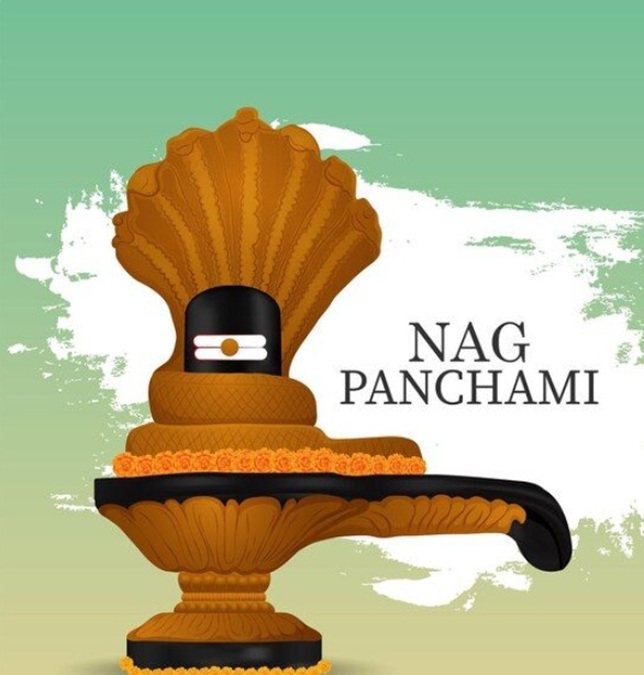
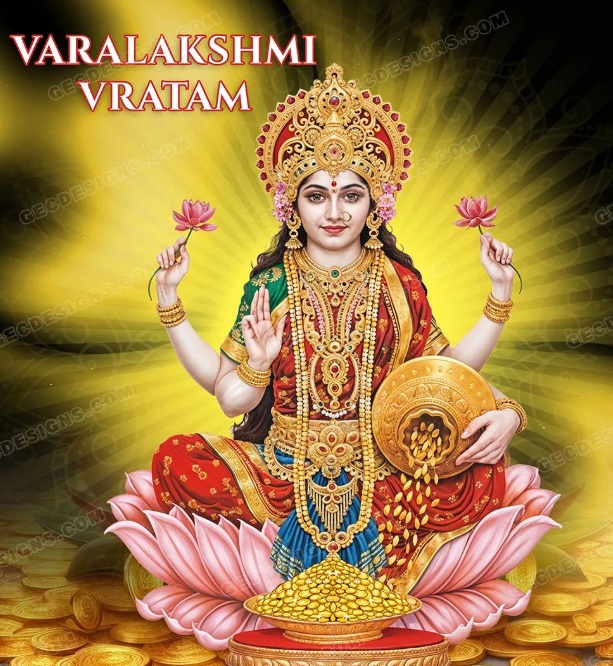
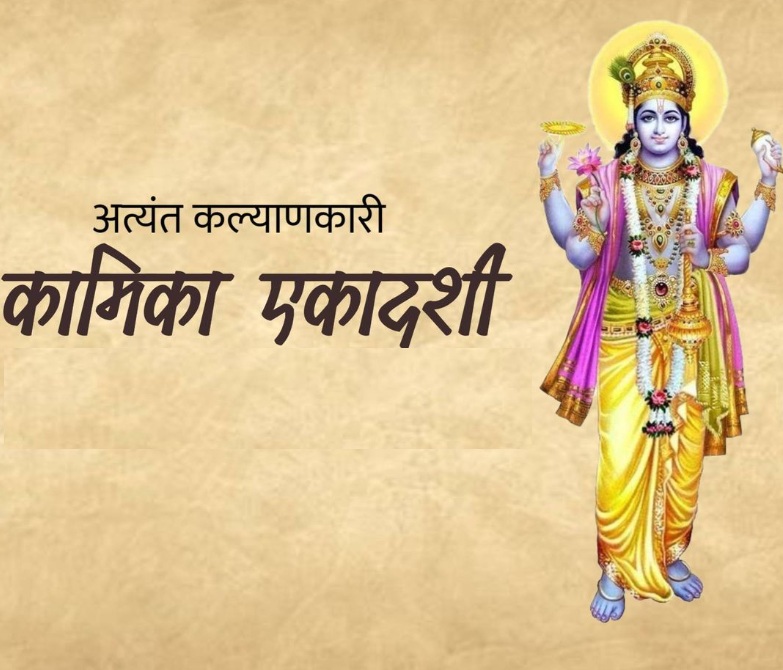
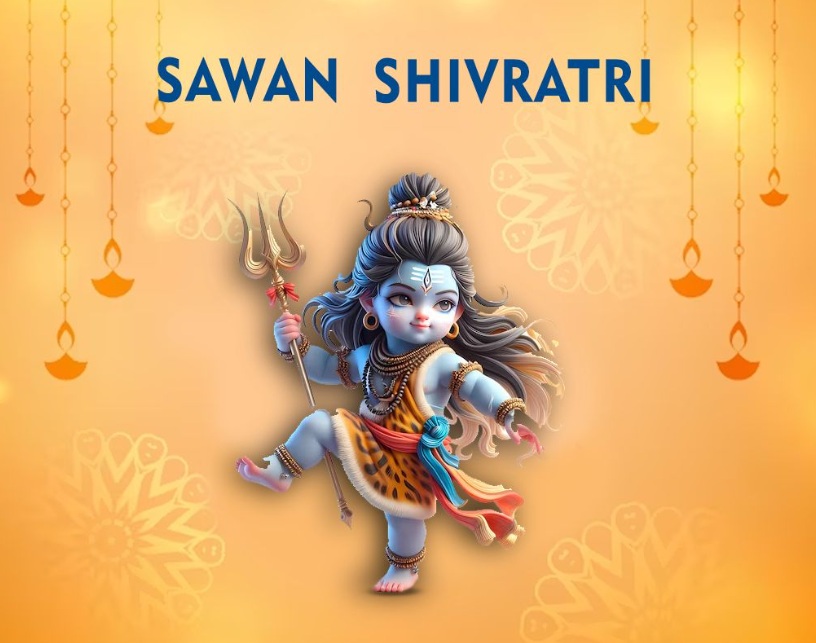
19. REGIONAL FESTIVALS CELEBRATED DURING SHRAVAN
Shravan is not just a month; it is a spiritual season. Each festival and observance weaves a divine thread in the fabric of human life—honoring the cosmic forces, cultivating devotion, and aligning one’s mind and soul with higher consciousness.
The festivals of Shravan bring out the best in Hindu spirituality—bhakti (devotion), seva (service), sankalpa (resolve), and sadhana (practice). It is a month where the divine energy flows more freely, where Shiva and Shakti bless those who seek them with true hearts. Observing these festivals in Shravan deepens one’s spiritual connection, moral strength, and inner peace.
20. MODERN RELEVANCE OF SAWAN
Sawan or Shravan month is more than just a religious observance—it is a transformative journey of body, mind, and soul. Rooted deeply in Hindu traditions, it brings together the power of ritual, strength of devotion, and purity of intention.
By
observing Shravan with faith, sincerity, and discipline, devotees not only honor Lord Shiva but also align themselves with cosmic rhythms, spiritual values, and inner peace.
May the sacred vibrations of this holy month bring joy, clarity, and blessings into your life.
Om Namah Shivaya!
21. WRAPPING UP
We hope this has tried to clear up some of the confusion about sawan Month. First of all, you will have to know about the meaning of
sawan, Sawan, or Shravan Maas, is the
fifth month of the Hindu lunar calendar. It is dedicated primarily to
Lord Shiva, the destroyer and transformer in the Hindu Trinity (Trimurti). During this month, the Monsoon season blesses the land with rain, symbolizing purification and nourishment. The month is called Sawan because during this period, the full moon (Purnima) typically occurs when the Shravana Nakshatra is dominant in the sky.
During the churning of the cosmic ocean (Samudra Manthan), the deadly poison (Halahala) emerged. To save creation, Lord Shiva swallowed the poison. His throat turned blue—hence the name Neelkanth. Devotees remember and revere this act throughout Shravan. Shravan inaugurates a spiritually charged time when sadhus take residence in one locale, rituals increase, and devotees pursue austerities, scriptural study, and extra seva (service).
You still have any question, feel free to ask me via comments or via email.
Don`t forget to share what you like here on
Youtube,
Facebook, Instagram with your friends and family.
At DivineNewz, a spiritual and temples news related information providers, is working on the project to work for religion and information about the temples to share with you to bring new ideas about spiritual and religious world.
If you want article on any other religious specific topic then post the comment i will write on that topic.
Get in touch with DivineNews by contacting by divinenewz6@gmail.com/ For more information, please visit:
https://www.divinenewz.com
Jai Mata Di!
ARTICLE WRITTEN BY:
Divinenewz is a firm Working very proficiently for sharing the divinely knowledge, darshan and pilgrim details and many more in spiritual field. If you have any unique temple and divine place around the globe, then contact us at divinewisdom0608@gmail.com, divinenewz6@gmail.com, or
For more information, please visit:
https://www.divinenewz.com
What Is Shravan (Sawan) Month?
Sawan, or Shravan Maas, is the fifth month of the Hindu lunar calendar. It is dedicated primarily to Lord Shiva, the destroyer and transformer in the Hindu Trinity (Trimurti). During this month, the Monsoon season blesses the land with rain, symbolizing purification and nourishment.
Why is it Called Sawan?
The word “Sawan” (also known as Shravan or Shravana Maas) originates from the Sanskrit word “Shravana” (श्रवण), which is the name of a Nakshatra (lunar constellation) in Vedic astrology. The month is called Sawan because during this period, the full moon (Purnima) typically occurs when the Shravana Nakshatra is dominant in the sky.


